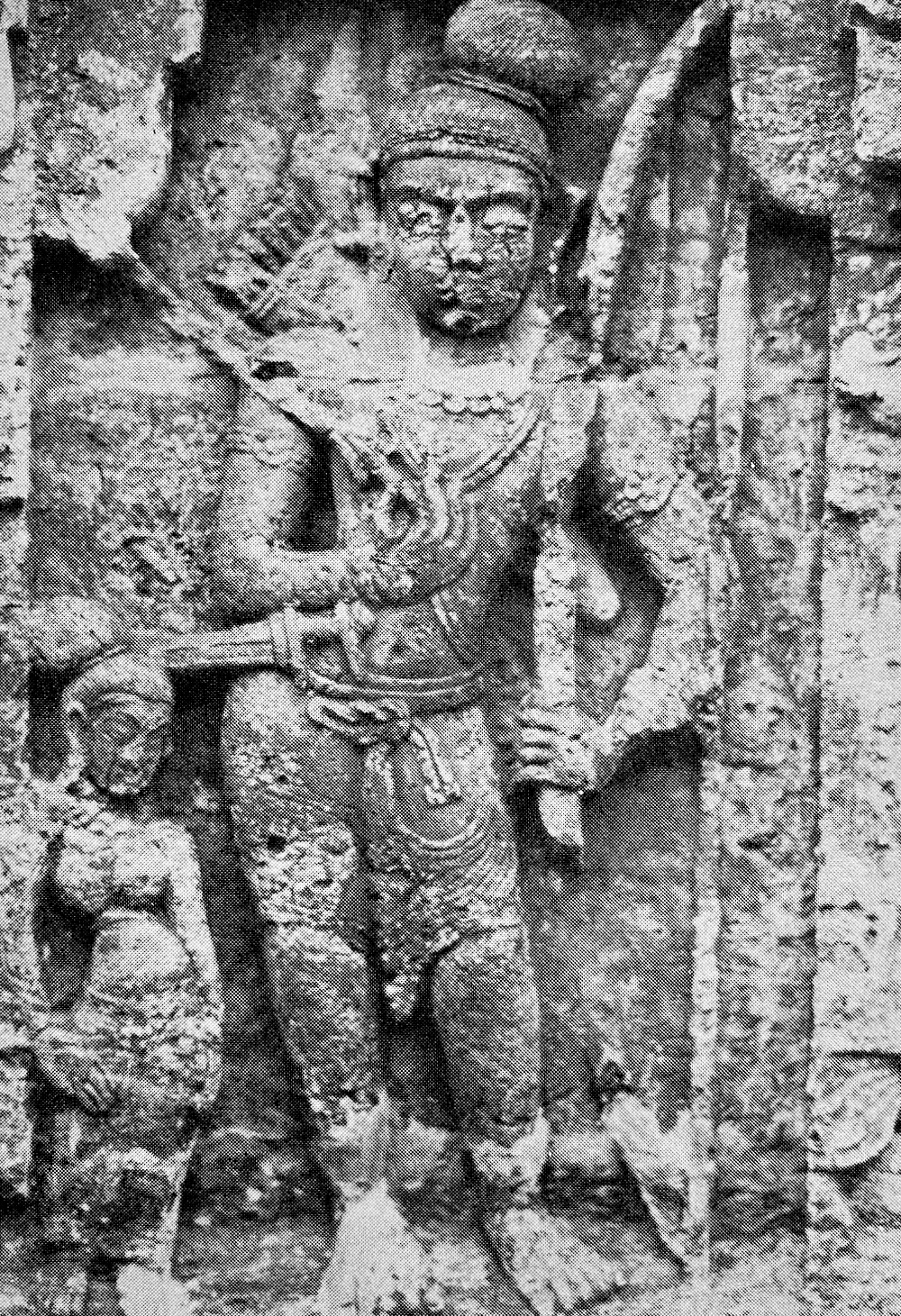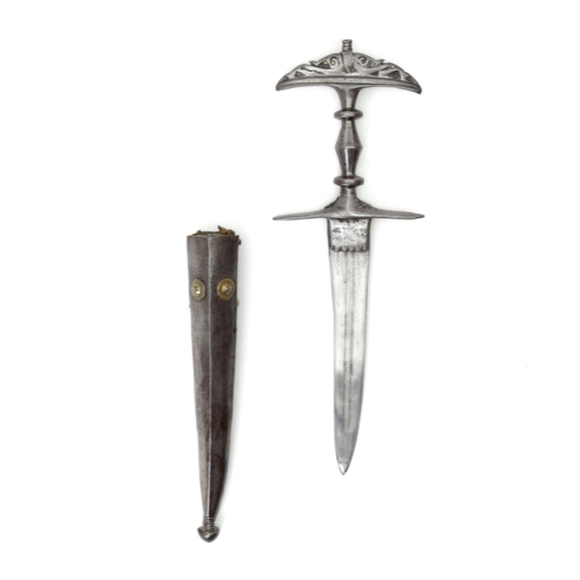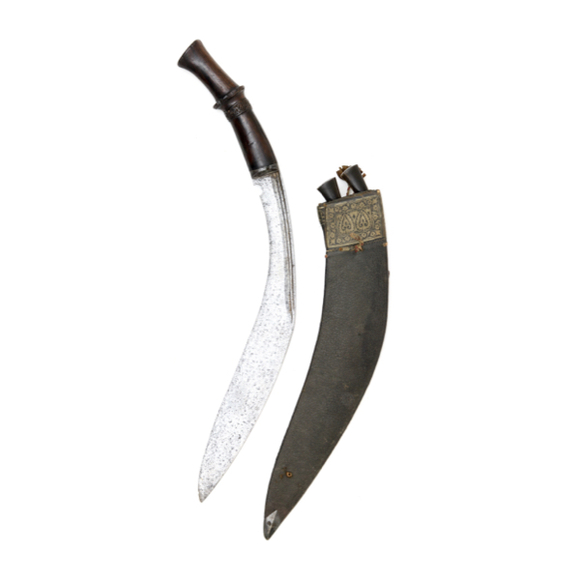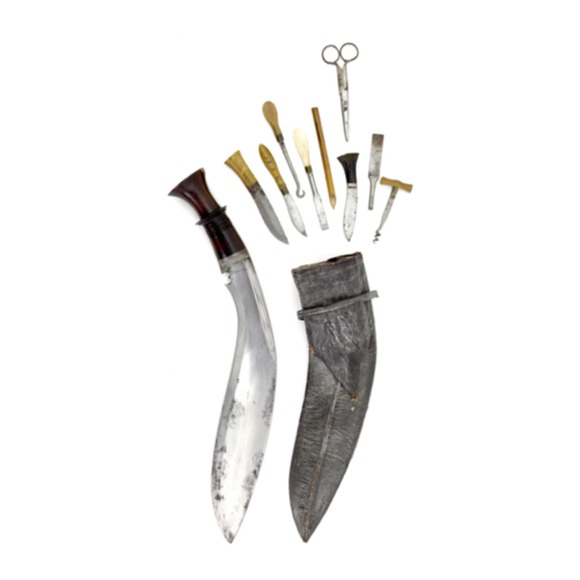Language: Hindi
Source: Egerton
Description
Jamdhar kátári appears in Egerton as the name for two daggers that he thinks are from Nepal.1
The term curiously consists of a combination of two names that are also given to the Indian push dagger, commonly known as katar but often described as jamdhar, primarily in older Mughal sources. (Also see glossary article: katar.)

A jamdhar kátári.
Mandarin Mansion inventory 2021.
Origin & later use
Daggers of this form appear among others on stone reliefs in Mukteśwara, a 10th-century Hindu temple dedicated to Shiva located in Odisha, India.2
A variation of it seems depicted in the Ain-i-Akbari (Persian: آئینِ اکبری) or "Administration of Akbar" of circa 1590 and described as a katarah.

A similar dagger worn by a warrior. 10th century.
Mukteśwara temple. Odisha, India.
The form somehow survived longer in the Hindu Kush in present-day Afghanistan than anywhere else. They were used among the Kalash people, also known locally as Kafir (pagan) because they practiced an early form of Hinduism.3

A similar dagger worn by a Kalash man, Hindu Kush area.
Illustrated London News, March 30, 1963.
"At the pshala Kafir is always on the look-out for thieves and enemies day and night. He never takes off his dagger, even at night, and during the day may constantly be seen watching his property fully armed with matchlock and other weapons." 4
-Sir George Scott Robertson, 1900
Notes
1. Lord Egerton of Tatton: Indian and Oriental Arms and Armour. Dover Publications; Revised edition, 2002. Plate IX & page 102, number 345.
2. Thomas E. Donaldson; Hindu Temple Art of Orissa, Volume Three. Leiden, Brill. 1987. Figure 4260.
3. Dmitry Miloserdov; Edged Weapons of Afghanistan: 19th-early 20th c. 2019. Pages 294-297.
4. Sir George Scott Robertson; Kafiristan and its people. 1900. Page 38.






